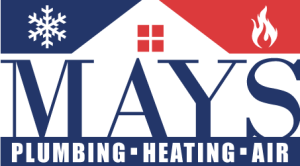Unraveling the Mystery: 10 Unexpected Plumbing Problems Lurking in Your Home
When you think about plumbing issues, you might picture obvious problems like clogged drains or leaking pipes. However, there are many other *less noticeable* plumbing problems that could significantly affect the comfort and efficiency of your home. Understanding these potential issues can not only save you from costly repairs but also help maintain a healthy living environment for you and your family. In this article, we will explore 10 unexpected plumbing problems that may be lurking in your home and how to address them.
1. Hidden Leaks
One of the most common yet often overlooked plumbing issues is a hidden leak. These leaks can occur behind walls, beneath floors, or in seldom-used areas of your house. Hidden leaks can cause substantial damage before you even realize they are happening, leading to mold growth and structural damage.
How to Spot Hidden Leaks
Pay attention to the following signs that you might have a hidden leak:
- Increased water bills without added usage
- Water stains on walls or ceilings
- Musty odors indicating mold growth
- Soft or sagging floors
Solutions
If you suspect a hidden leak, it’s best to call a professional plumber to conduct a thorough inspection. Early detection can reduce repair costs and prevent further damage.
2. Water Pressure Issues
Low or fluctuating water pressure is another plumbing conundrum that may not immediately draw your attention. This issue can affect your daily activities, from showering to doing laundry, and can be traced back to several causes.
Causes of Water Pressure Problems
Common causes may include:
- Clogged pipes due to mineral buildup
- Leaks in your plumbing system
- Faulty pressure regulators
- Municipal water supply issues
Diagnosing and Fixing Water Pressure Problems
Start by checking other faucets to see whether the pressure issue is localized or throughout the house. For localized low pressure, consider cleaning aerators and showerheads. In case of widespread issues, consulting a plumber is advisable, as they can accurately detect the root cause and recommend solutions.
3. Clogged Drains Beyond the Trap
While many people experience regular drain clogs, it’s essential to recognize that clogs can also occur *further down the line*, outside of your immediate reach. These clogs may not only slow down drainage but can also lead to more serious issues, including pipe damage.
Signs of Deeper Clogs
Keep an eye out for:
- Multiple drains backing up simultaneously
- Unpleasant odors coming from drains
- Gurgling noises when using appliances
Addressing Deep Clogs
For deeper clogs, it may be necessary to use a plumbing snake or hydro jetting service. Avoid using chemical drain cleaners, as they can cause more harm than good, potentially damaging your pipes.
4. Old Pipes and Pipe Corrosion
Many homes built before the 1970s may still have *old piping materials*, such as galvanized steel or cast iron, which are prone to corrosion. Over time, these pipes can lead to not just leaks but also water contamination.
Identifying Old Pipes
Inspect visible pipes in your basement, crawl space, or under sinks. If you see corrosion or a rust color, replacement is necessary.
Replacement Solutions
Consulting a plumbing professional for a complete re-piping can enhance your water quality and prevent future issues. Consider upgrading to materials like PVC, which are more resistant to corrosion.
5. Sewer Line Backups
Sewer line backups are some of the *most unpleasant plumbing problems* a homeowner can face. They often manifest in gurgling toilets or foul odors coming from your drains. Understanding the root causes can help in prevention.
Common Causes of Sewer Backups
- Tree roots invading sewer lines
- Debris buildup
- Flushing non-biodegradable materials
Preventive Maintenance
Regular sewer line cleaning and inspections can significantly reduce the risk of backups. If you experience frequent backups, a reputable plumber may recommend installing a backflow valve for additional protection.
6. Faucet and Showerhead Leaks
Dripping faucets and showerheads might seem minor, but they can add up to significant water waste over time. In addition to wasting water, these leaks could be a sign of other plumbing issues.
How to Inspect for Leaks
Check faucets and shower connections for signs of water accumulation or rust. You may hear dripping sounds or notice wetness under the sink, which indicates a need for repair.
Fixing Faucet and Showerhead Leaks
Many faucet and showerhead leaks can be fixed by replacing washers or O-rings. If the leaks persist, a plumber can help identify the underlying issue and suggest repairs or replacements.
7. Poor Water Quality
Sometimes, the problem isn’t with the plumbing itself but rather with the quality of the water coming from your taps. Discoloration, unpleasant tastes, or smells may indicate a problem with your plumbing or the municipal supply.
Identifying Water Quality Problems
Signs to watch for include:
- Cloudy or discolored water
- Bad odors from the tap
- Unusual taste
Improving Water Quality
Investing in a water filtration system can help improve water quality. Additionally, consulting with a plumber can help identify whether the problem is due to pipe corrosion or issues with the municipal supply.
8. Running Toilets
A running toilet is not only annoying, but it can also waste a significant amount of water over time. Understanding the causes can help you address this issue swiftly.
Causes of Running Toilets
Common causes may include:
- Faulty flapper valves
- Faulty fill valves
- Issues with the float ball
Fixing a Running Toilet
Fixing a running toilet typically involves replacing faulty components within the toilet tank. In some cases, a simple adjustment may suffice, while other situations may require complete component replacement.
9. Water Heater Problems
Your water heater is essential to your home’s plumbing system, providing hot water for various tasks. However, water heaters can face unexpected issues that can disrupt their functioning.
Common Water Heater Problems
Pay attention to the following signs:
- Insufficient hot water
- Strange noises from the heater
- Water discoloration
Solutions for Water Heater Issues
Routine maintenance, including flushing the tank and inspecting the anode rod, can prolong your water heater’s lifespan. If you experience persistent issues, consult with a professional plumber for a thorough inspection.
10. Plumbing Fixture Issues
One last unexpected plumbing problem can stem from fixtures like sinks, tubs, and toilets themselves. If fixtures are older or if they’ve been poorly installed, you may encounter leaks, cracks, or performance issues.
Identifying Fixture Problems
If you notice:
- Leaking from the base or around edges
- Visible cracks and chips
- Difficulty operating valves
Resolving Fixture Issues
In many cases, simply tightening screws or replacing washers may solve the problem. However, for significant damage or age-related issues, it may be more effective to replace fixtures altogether.
Conclusion
Understanding these *unexpected plumbing problems* is key to maintaining your home’s comfort and safety. Regular inspections and proactive maintenance can prevent many of these issues from escalating into more significant complications. If you discover any of these problems in your home, don’t hesitate to consult with a professional plumber who can provide the expertise needed to resolve them effectively.
Being proactive about plumbing maintenance is essential for protecting your property and ensuring a healthy living environment!












